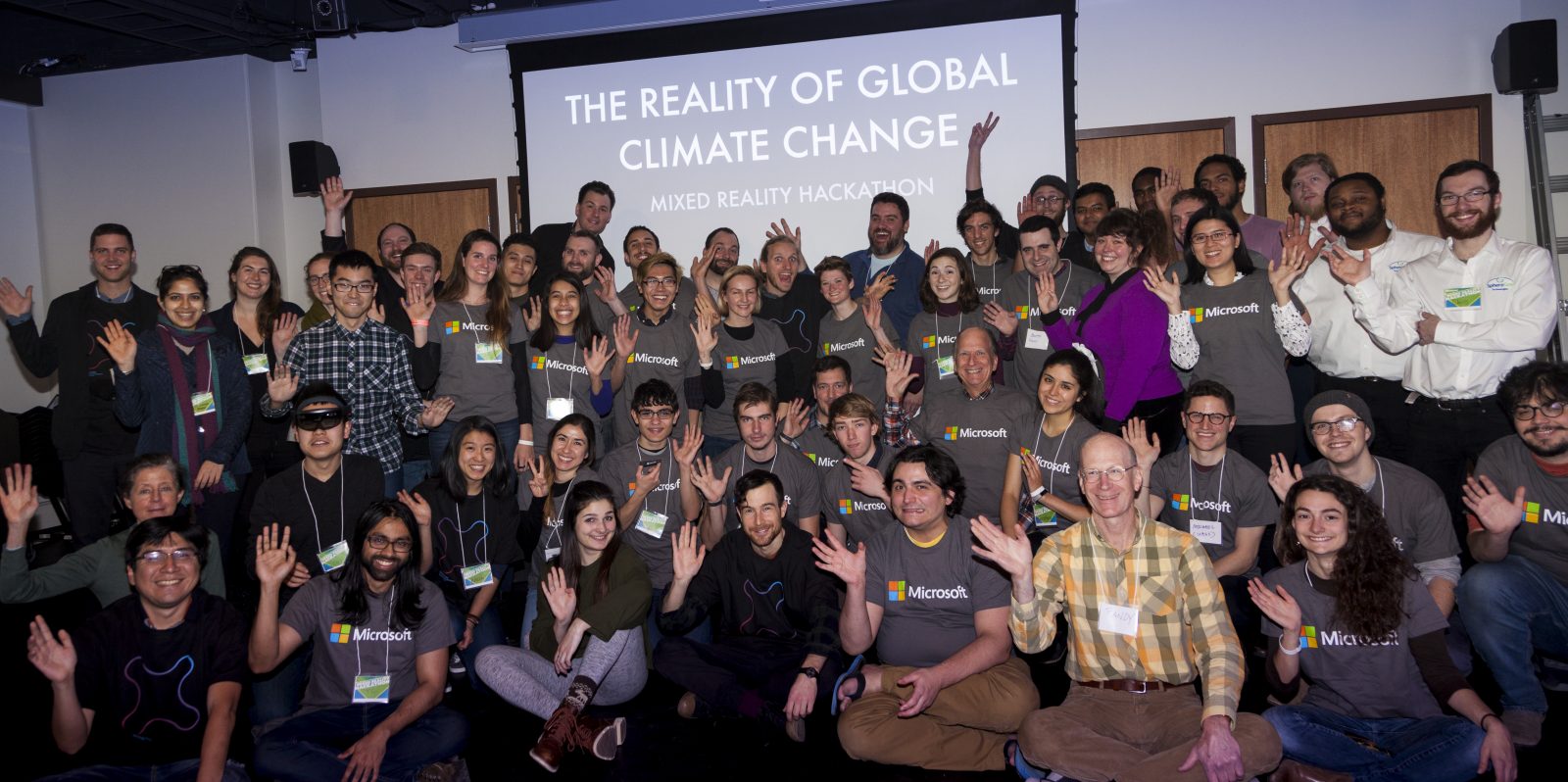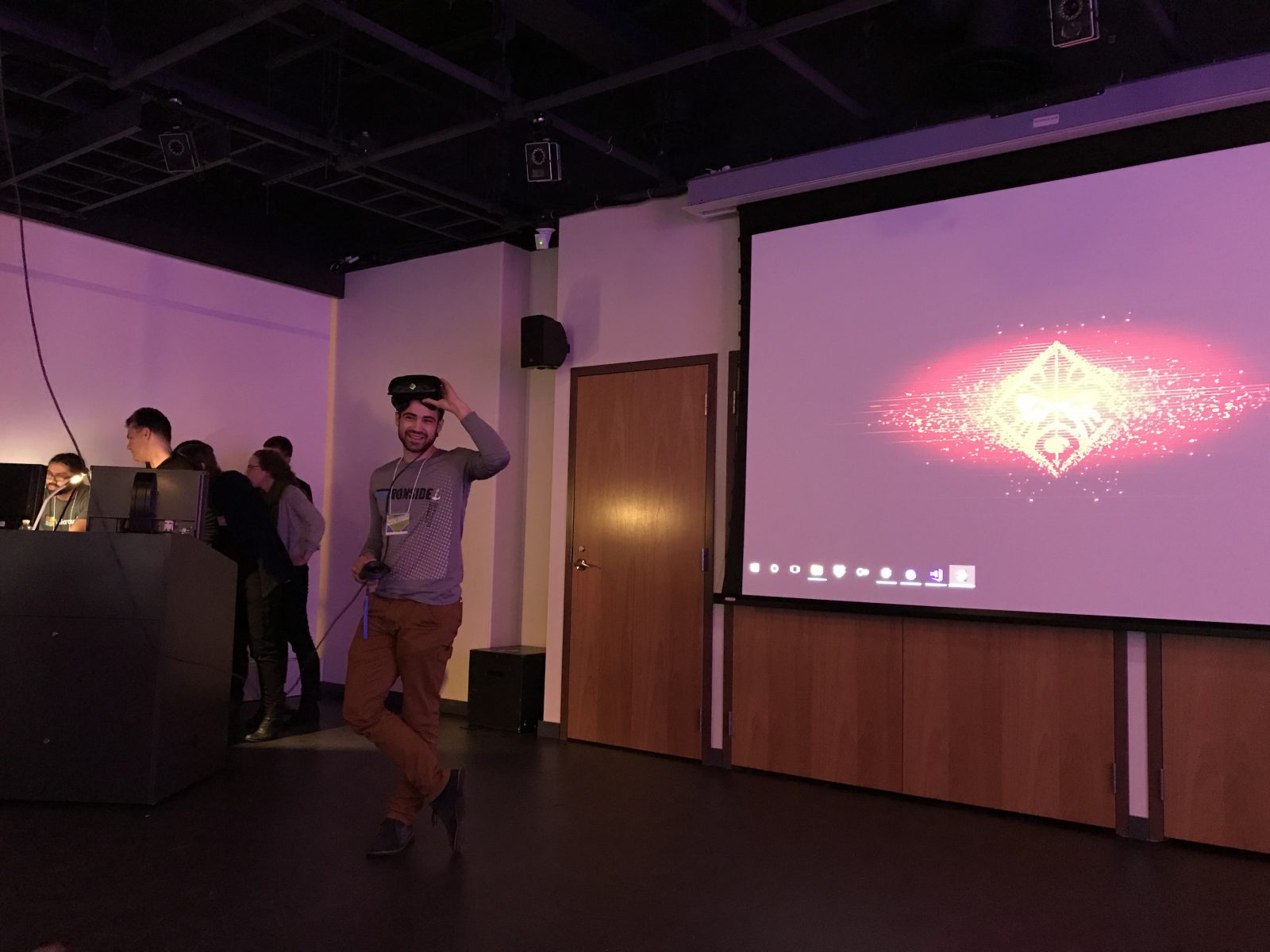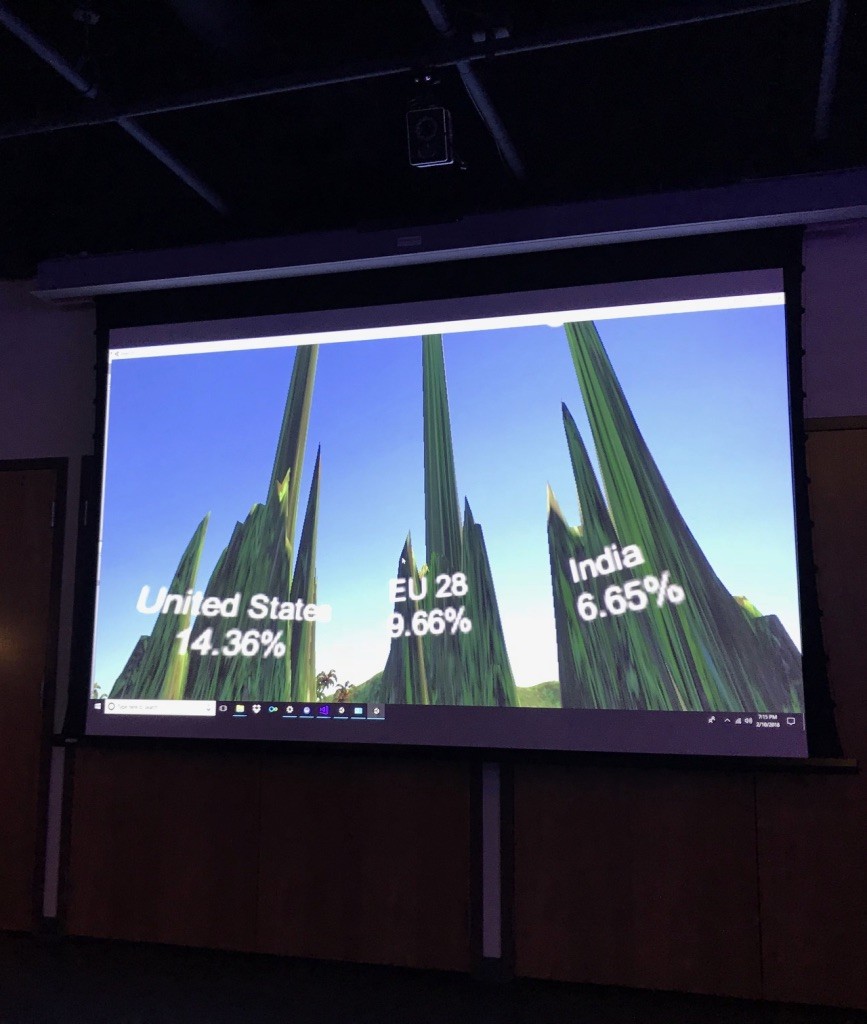
It was, in the words of one attendee, “kind of an unusual mix.” Artists and graphic designers debated color choices with programmers, while musicians leaned over their laptops to consult with climate policy wonks. They all gathered this weekend, at the inaugural Reality of Global Climate Change Hackathon, in a common mission to visualize and gamify climate change data, using virtual reality, augmented reality, and motion capture, among other tools.
With just one frenetic day to create their applications, hackathon participants built virtual worlds where carbon emissions formed towering columns, and life-size graphs morphed in response to different policy decisions. Team Climb-It transformed the world into a silo where carbon emissions data represented water pouring from holes sized according to countries’ carbon footprints. Players have to locate the countries responsible for these holes and plug them in the silo.
Other projects mapped data back onto the real world. The Data-Driven Yale team teleported users around Beijing’s 17 neighborhoods, each one scaled to a different height according to its air pollution and urban heat island intensity. Three determined programmers plotted the world’s energy sources onto a 3-D globe, in a visceral depiction of fossil fuels’ dominance – and renewable energy’s growth.

Andrew Feierman prepares to demonstrate Data-Driven Yale’s virtual tour of Beijing.

One game transforms national emissions data into mountains.
The event began on Friday afternoon, as independent game developer Jake Jefferies helped participants design basic virtual worlds in Unity’s game development software. Data providers from the World Resources Institute and Data-Driven Yale joined Jeffries, Quinnipiac University Professor of Game Design Elena Bertozzi, and representatives from Microsoft HoloLens and Mixed Reality teams and Datavized in pitching data sets or sharing strategies for applying augmented reality tools. In addition to these presenters, the Yale Center for Collaborative Arts and Media (CCAM), Yale Information Technology Services, Yale Center for Business and the Environment, Tsai Center for Innovative Thinking at Yale, Yale Project on Climate Change Communication, Data-Driven Yale, Connection, and SphereGen, co-sponsored the event.

A Microsoft representative walks through the educational applications of Hololens technology.
A video pans the scene on Friday night, as hackathon participants explore different virtual worlds.

Two participants test out virtual reality games.
Participants ended the evening with interactive demonstrations of the Microsoft Hololens headset, which took them to worlds where they fought robots, wandered through a dinosaur-strewn desert, and learned about human anatomy. They returned early on Saturday morning, working quickly to prepare for the evening’s presentations. Mentors wandered among the groups, sharing advice and troubleshooting questions around programming, climate change, and storytelling.

A Data-Driven Yale huddle, as the team develops a game plan for the day ahead.

Research Assistant Chendan Yan flies over New York City, in a VR version of Google Earth.
For many projects, the hackathon represents a first step towards understanding the potential of VR. Many are still in what Jeffries terms “the wilderness” – developer-speak for the early, exploratory phases of games and augmented reality projects. Some groups plan to use 3D printers to translate their creations into something tangible; others will work to integrate their visualizations into existing websites. For many, the vast potential of virtual and augmented tools – and their own ability to wield and leverage this technology – was the main takeaway. The event helped build students’ confidence in their ability to leverage software that can seem intimidatingly complex, or dive into climate data shrouded in jargon. In the words of one Microsoft mentor, “It doesn’t have to be complex – it has to be compelling.”

Recent Comments